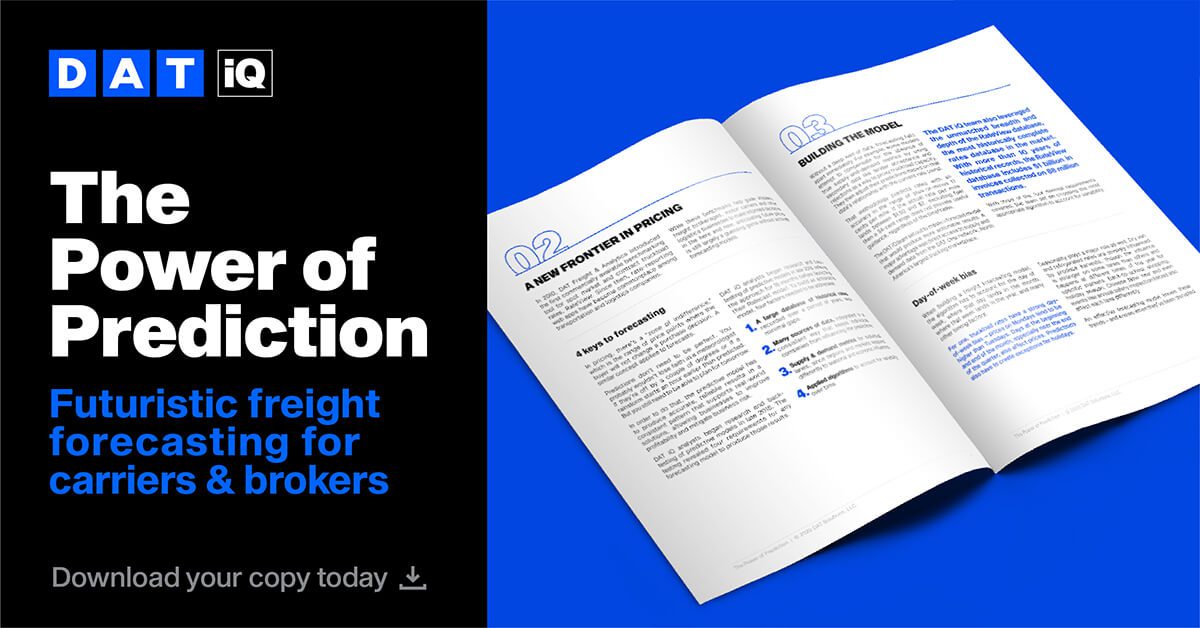Imagine you’re leaving for vacation a month from now, but your bags have to be packed today. You likely aren’t going to find an accurate weather forecast that far in advance, so you’ll just have to use your best judgment when choosing which clothes to pack.
For most transportation and logistics operations, that’s basically what it’s like when negotiating rates. Accept a bid that’s too low, and you might not have trucks available when capacity is tight. Accept a bid that’s too high, and your business loses profit.
Get the white paper to learn more about using freight forecasting models in your business.

Freight is fraught with these types of uncertainties, and the volatility of the past year has proven how valuable accurate forecasting is for any business that relies on truckload freight. And with more and more technology and data science entering the industry, artificial intelligence-assisted forecasting can now deploy models that predict where prices are going, even in times of unprecedented disruption.
In our white paper “The Power of Prediction: A Data Analytics Solution for Forecasting Freight,” you’ll find details on how to assess predictive models to find the most accurate tools for your business.
Inside you’ll find:
- The 4 keys to forecasting
- How forecasting models are built
- Where to apply forecasting in your business

